Runway modeling certainly looks like a glamorous job.
- Inbox Dollars - Get paid to check your email. $5 bonus just for signing up!
- Survey Junkie - The #1 survey site that doesn't suck. Short surveys, high payouts, simply the best.
- Nielsen - Download their app and get paid $50!
Models get to wear fancy dresses, travel to exotic locations, meet celebrities and powerful people, and work with the biggest names in the fashion industry.
Yes, it’s all that, but you have to meet stringent physical requirements, work hard for long hours, and have a Plan B or a strategy for life after runway modeling.
In today’s blog post, we discuss how to become a runway model: the skills involved, how much you can possibly make, and what careers you can go into after runway modeling.
How To Become A Runway Model
Below is a list of tips to follow to break into the modeling industry and launch your career as a runway model.
1. Make sure you meet the physical requirements.
Generally, fashion houses and modeling agencies look for female models 16 to 21 years old, 5 foot 8 inches and above in height.
Officially, there aren’t exact weight requirements, but most international runway models weigh between 110 to 130 pounds. With that kind of height, it’s quite logical that you’ll have to be quite lean and skinny.
If you’re below 18 years old, you’ll need to have a parent or legal guardian sign your contract, and you might need to have a work permit depending on where you want to work.
2. Take care of yourself.
Take care of your body and your general health. Modeling is all about how you look, and if you’re not taking care of yourself inside and out, it will show on your skin, your hair, and your figure.
Plus, modeling is hard work. You’ll need to be at your healthiest if you don’t want to get sick while you endure the long hours, physical exertion, and mental load of being a runway model.
Assess your lifestyle and make the necessary changes for a more wholesome one.
Eat fewer empty calories and more fruits and vegetables, and keep yourself hydrated.
If you don’t already have a skincare regimen, develop one. The most basic one you can do is cleanse, tone, and moisturize every morning and every night before you go to sleep.
Always wear sunscreen even when you’re staying indoors, and never go to sleep with your makeup on.
Start an exercise regimen that you’re likely to stick to, especially those that strengthen your core and legs, as you’ll be doing a lot of walking and standing up.
Stay away from alcohol, cigarettes, and drugs. You’ll need to be as healthy as you can be because it shows in your appearance.
3. Work on your walk.
Becoming a runway model entails having a commanding runway walk.
Pull your shoulders down and back. This pulls up your head automatically, but keeping it up takes conscious effort.
This straight posture comes naturally to some, but others would need to practice this by balancing a book on top of their head and walking around. Yoga also helps.
Keep your eyes straight ahead and relax your jaw. You want to look aloof but not tense.
Your arms should swing naturally, your toes should point forward, and your hips should sway confidently. Don’t exaggerate your movements.
No joke. Here are the fastest ways to make easy money online. Click here to see how.
When you get to the end of the walk, wait for a beat then strike a pose by leaning on one hip. Hold the pose for a couple of seconds, then walk back to your starting point.
Practice by taping off a 6 inch by 15 feet rectangle on your floor, or on a wooden plank with the same dimensions (sand it off, no one wants splinters) and place a mirror at the very end so you can see yourself.
Practice your walk to different songs with different rhythms, wearing different types of clothes (swimwear/lingerie, loungewear, casual, athleisure, couture, winter wear), in different types of shoes (ballet flats, sandals, stilettos, kitty heels, wedges).
The next level is developing your own style, like Naomi Campbell’s strut or Gisele Bündchen’s horse walk. As you practice and as you do actual runway jobs, you’ll find your walk.
4. Practice different poses in front of the camera.
Aside from your walk, what makes you stand out as a runway model are your poses at the end of the runway walk.
Practice your poses in front of the mirror. The usual pose at the end of the runway is standing with one hand on your hip and leaning into that hip, but try playing around with your pose.
It helps to have a photographer work with you so you can review how your poses look. If you can’t afford a photographer, set up a tripod with a camera and set it on burst to capture your poses.
Practice your facial expressions as well. Experiment with a sexy look, a fierce stare, or a smize. Look distant, happy, or blank. Try a half-smile, close-mouthed smile, and the biggest smile you can muster.
5. Study, study, study.
There are plenty of modeling books to peruse on everything from the history of fashion, to supermodel biographies, and instructional books.
If you don’t want to spring for books, watch free videos of runway models on YouTube and even FashionTV, if you have cable.
Study how to do your own makeup as well. Educate yourself about your skin, what products and ingredients work with it, and which ones to avoid.
6. Get an excellent modeling portfolio.
Your modeling portfolio is essentially your résumé and calling card.
It’s the first thing modeling agencies and clients look at when you want to be considered for a job or a gig.
To make a great first impression, what you want is a modeling portfolio showing high-quality, stunning photos that capture the entire range of your looks and what makes you unique from every other model.
Hire a professional photographer who already has experience taking photos of models for editorials, commercials, or catalog shoots. Choose a photographer whose work you like and matches your style.
Go over your contract with the photographer thoroughly. Be very clear on how much you need to pay and what’s included in the package. Make sure you get the digital copies of your photos as well.
You’ll want up to 20 photos total, with headshots, profile poses, full-body shots, and back shots. Include a variety of facial expressions as well; serious, smiling, pensive, laughing.
Mix up your look with a variety of hair and makeup looks, from a very minimal look to couture makeup. Hire a professional makeup artist and a hairstylist to help you achieve this range of looks.
You can make money from home and it doesn't have to be challenging. Click here to see how.
Wear simple clothing that shows off your figure, as that’s what agencies want to see. A good outfit is a crisp button-down shirt that fits well, figure-hugging (but not too tight) jeans, no jewelry, and dressy shoes.
Work on both an online version and a printed version of your modeling portfolio. The online version is for sharing with your digital contacts and so that you can be searched online, while the printed version is for handing to someone you meet personally.
7. Look for a modeling agency.
Here are a couple of lists of the top modeling agencies in the US and the top international modeling agencies to get you started.
You can also do a good old-fashioned Google search for modeling agencies near you or where you want to work.
Do your research on the modeling agencies you’re interested in: their clients, their culture, any news items about them, reviews and testimonials from their models, and all the information you can gather.
Their application guidelines are likely to be published on their website as well. Review them and make sure you understand them before starting the application process.
When you’re satisfied that the modeling agencies you’re interested in are legitimate and are a good fit for you, reach out to them through their contact information and submit your online portfolio if you can.
If you’re contacted back and asked to meet with an agency, do your best to give a great first impression. Don’t overdo your hair and makeup; keep everything clean, well-groomed, tidy, and neutral. Wear clothes that show off your figure tastefully.
Show up on time, having done your background research beforehand. Also make sure you’re up to date with the currently popular designers and models, recent issues and events, and fashion trends.
Exude confidence and sincerity. Answer questions truthfully but tactfully.
Never sign up with agencies that sell you modeling classes or photo sessions, or ask for money upfront.
8. Grow a thick skin.
As I’ve pointed out, the modeling industry is a highly competitive one. You will be rejected, criticized, and even insulted.
If you let this get into your head, you’ll probably quit in a few days. So do what you need to do to toughen yourself up and let all the harsh words roll off your back.
Eventually, you’ll be assigned to a job that is perfect for your look and personality. Think of each rejection as one step closer to the right job for you.
Aside from this, the demands of the job will eventually take its toll on you.
Being a runway model means early call times for jobs that stretch into the night, going from waiting around the whole day to hectic backstage prep and runway shows, to partying and socializing till the wee hours of the morning, then getting only a few hours of sleep before you have to do everything all over again.
You’ll also likely be traveling a lot; the constant jet lag and homesickness can chip away at you physically, emotionally, and mentally.
Avoid temptations to self-medicate with drugs and alcohol, and instead work on maintaining your healthy lifestyle, and find hobbies you can do during your downtime to avoid feeling too overwhelmed.
Find yourself a support system that you can trust to influence you to make good decisions, and seek professional help if you feel you need it.
9. Be a professional.
Runway modeling is far from a conventional job, but it still is a job.
Treat it like one.
Never be late, always answer phone calls, and always reply to emails. If you can’t, return the phone call or email as soon as you can.
When you commit to an assignment, do all you can to fulfill your end of the contract.
Regard everyone with the same respect, from makeup artists to photographers to designers.
This also means respecting yourself. You’re a human being with thoughts and feelings. There are times when you’ll be asked to do something that you’re uncomfortable with or crosses a moral, ethical, or legal line.
Know when to speak up and make your opinions known. No career should be more important than your integrity.
10. Keep yourself safe.
You are most vulnerable when you’re only starting out. Always have your guard up and protect yourself.
It bears repeating that you DO NOT need to pay any money for modeling school, lessons, training, or test shoots. Your agency should be taking care of all that.
Get yourself a lawyer to look over contracts so you don’t get any unpleasant surprises and everything is fair.
You may be lured to join fake go-sees, modeling contests, or free photography sessions designed to scam you, rob you, take advantage of free labor, or worse. If it sounds too good to be true, it probably is.
Do your best to always have someone with you when going to photoshoots, go-sees, or shows in places you’re unfamiliar with and with people you don’t know.
Maintain a few contacts with whom you continually update your whereabouts and what’s been happening with your modeling career.
How Much You Can Make As A Runway Model
Supermodels earn millions of dollars every year. Top-earning model Kendall Jenner earned $40 million in 2021, and the top 10 highest-paid models collectively earned $284 million the same year.
But these amounts include what these models make from endorsement deals and other business partnerships, and does not include tax and fees to agents and managers.
Relatively unknown runway models, however, have a wildly variable salary; they can make anywhere from $0 to $20,000 or more for a single show. Yes, starting from $0.
Sadly, it’s not unheard of for runway models to be paid nothing for a show and being rewarded instead with exposure; sometimes free food, clothing, or other merchandise.
Runway models would sometimes have to choose jobs that aren’t very high-profile but paid cash, or prestigious shows that offer very little but exposure and opportunities to mingle with the movers and shakers in the modeling industry.
It’s a tough industry to break into and earn a lot, but if you persevere and keep working hard and reaching out to the right people, you’re going closer to your target wage.
Common Modeling Scams to Avoid
If you’re just a beginner in runway modeling, unfortunately, you are the prime target of modeling scams.
At best, these scams can cost you a lot of money, but at worst, they can cost you your safety and even your life.
Here are some modeling scams to be aware of and how to avoid them.
Bogus agencies. Unfortunately, fake modeling agencies have grown alongside legitimate ones.
So how do you know if a modeling agency is fake?
The first red flag to look for is in their business hours. Real modeling agencies operate during usual business hours, Monday to Friday, 9am to 5pm. If you’re contacted by a modeling agency to attend a so-called “open call” or “talent review” on a weekend or in the evening, be suspicious.
Before you come into their office, do your research online first. Find the company website and use their contact information to check if they have a license in their state.
You can also go to the Better Business Bureau website and check if there are any complaints against them.
Go on modeling forums online and ask around if other models have had experience with this particular modeling agency.
When you do come into their office, look at their walls. Do they have a license displayed? If not, that’s another red flag.
Legitimate modeling agencies earn money by securing work for their talents. They are paid on a commission basis and are paid only after they get work for their talents, and not before.
If they ask for money upfront to represent you, run.
Modeling agencies also shouldn’t be pushing an “exclusive” photographer to do your test shots. You should be given recommendations, but who you hire should be your own decision. If the agency requires you to go to one specific photographer, they’re likely to be getting kickbacks.
You should also be allowed to think on a contract for a few days and have an attorney or another trusted third party to do it for you. Any questions you have should be answered to your satisfaction.
If they’re rushing to get you to sign, or threaten to withdraw the offer if you don’t sign within the day, that’s a huge red flag.
Modeling school scams. As I’ve mentioned, when you’ve found a modeling agency to work with, they should be taking care of the costs of modeling classes.
You might still be tempted to enroll in a modeling school before you go into an agency to learn all the skills you’ll need.
However, industry insiders agree that instead of attending a modeling school, you’re more likely to gain the experience and training you need on the job; during test shoots, by interacting with fellow models, and through coaching from your agent.
Plus, in reality, potential clients who choose which models to book won’t care if they went to modeling school anyway.
If anything, it’s better spent on classes for a specific skill that you may be lacking.
For instance, if you’re a bit shy, enroll in public speaking classes. If you don’t know how to do your makeup, enroll in a makeup class.
Bottom line: Save your money, time, and effort and skip modeling school.
Nude photo scams. Legitimate modeling agencies and scouts will never, ever ask you for nude photos. If you do receive such a request, it’s important to report this to law enforcement; it’s likely they’ve done it before and will do it again.
Other Modeling Careers To Consider
Runway modeling simply isn’t for everyone.
It takes a certain look, body type, and height to be a runway model.
But this doesn’t mean you can’t be a model. Here are other modeling careers to consider.
Fashion/Editorial model. Editorial or print modeling refers to showcasing fashion designers and trends through a pictorial story. Modeling in these editorials is highly desired because these editorials set the current trends.
The standard height requirement for fashion models is 5 feet and 9 inches to 6 feet, as well as a lean, skinny body type.
Catalog model. The purpose of catalogs is to attract customers to purchase products or avail of their services, with catchy visuals and persuasive copy.
Thus, catalog models look more like real, everyday people to catch the buyer’s attention.
The physical requirements of catalog models aren’t as strict as those of editorial models, although they do have to have personality and a dazzling smile.
Promotional model. Also known as “promo models” or “brand ambassadors,” they interact with customers directly with the aim of attracting them to the product or service that the models are promoting.
As with all other models, promotional models have to be conventionally attractive, but more than that, they’ll have to be smart and articulate to be able to share their in-depth knowledge about the product they’re promoting to potential customers.
Promotional models are usually assigned in trade shows, events, malls, and other public spaces.
Parts model. Nope, I don’t mean car parts.
A parts model shows off a specific part of the body, such as a hand, leg, foot, facial features, chest, lips, eyes, and other body parts for editorial, commercial, and catalog work.
The demand is mostly for attractive body parts, but there are also companies and advertisers that look for unattractive body parts, depending on the type of campaign they’re running.
Swimsuit and lingerie model. Showing off swimsuits and lingerie usually requires a model with flawless skin and a voluptuous, curvy physique due to the nature of the clothing; revealing and body-hugging.
Aside from swimsuits and lingerie, these models may also be tapped to model sleepwear, shapewear, and other undergarments.
Fitness model. If your body type is lean but more muscular than skinny, being a fitness model might be for you.
Being a fitness model for the long term is demanding; it requires models to maintain their toned physiques and body weights to continue working.
Fitness models are in demand by athletic wear, supplement, and fitness companies.
Plus-size model. The usual size for runway models and models, in general, is “tall and skinny.”
But plus-size models are now slowly making their own space in the modeling industry, with models like Ashley Graham and Tess Holliday being highly popular.
Generally speaking, plus-size models are larger than the average model, but this doesn’t automatically mean overweight or obese; they normally wear between a US size 8 to a US size 14. In fact, the majority of women in the US would be considered plus-sized.
The good news is this industry is growing; more and more fashion agencies are hiring plus-size models and redefining the standards of “beauty” in this industry.
Plus-size models are increasingly in demand in catwalks, editorials, and commercials.
Alternative model. The modeling industry seems to be obsessed with fitting into a certain look.
But nowadays, more and more companies are realizing that their target audience wants to see more models that mirror their own appearance and body types, as well as unique characteristics that have historically been viewed as “imperfections” and “flaws” in traditional modeling.
If you have unnatural hair color, tattoos, piercings, freckles, wrinkles, stretch marks, vitiligo, or any other skin markings, are aged over 40, or are simply not a conventional beauty, you don’t have to discount your dream of being a model anymore.
There are alternative modeling agencies you can find and contact to help you get your modeling career started.
Careers After Runway Modeling
Runway modeling is not a lifelong career.
While you’re reaping the benefits of your runway modeling, start thinking about your future after runway modeling.
Save yourself from the shock of a career shift by considering this early on and recognizing it as inevitable.
Here are some careers that you can consider taking up when you’re done being a runway model.
- Fashion design
- Fashion consultant
- Fashion stylist
- Fashion journalism/blogging
- Photography
- Makeup artist
- Hairstylist
- Influencer/brand ambassador
- Fitness instructor
- Acting/show business
- Any passions or interests outside of fashion
The Secrets to Becoming a Successful Runway Model
Becoming a runway model seems easy and glamorous.
But as we’ve learned today, it’s actually a challenging job in a highly demanding industry.
It’s going to take plenty of discipline, hard work, and perseverance to become a successful runway model.
Hopefully, this article helped you create a strategy to get started as a runway model.
Other Resources
Here are other ways to get paid to wear clothes.
How’s Your Modeling Journey Going?
Are you determined to become a runway model? Have you started on your journey? Tell us all about it in the comments!

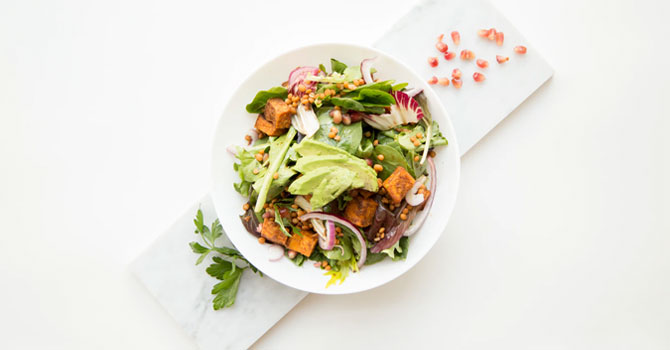
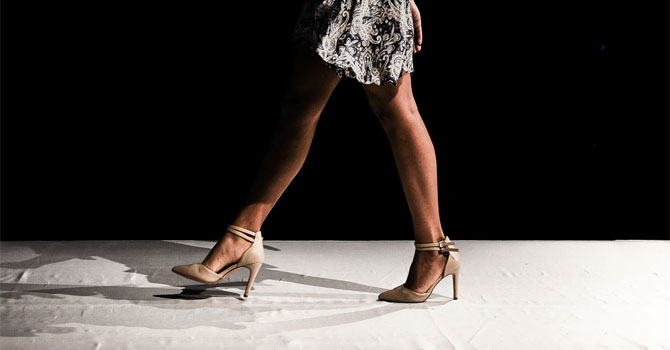
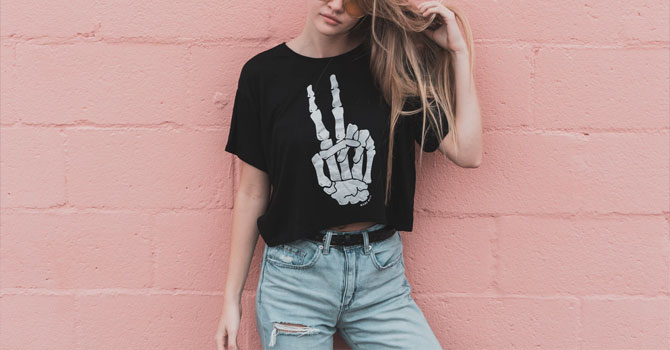

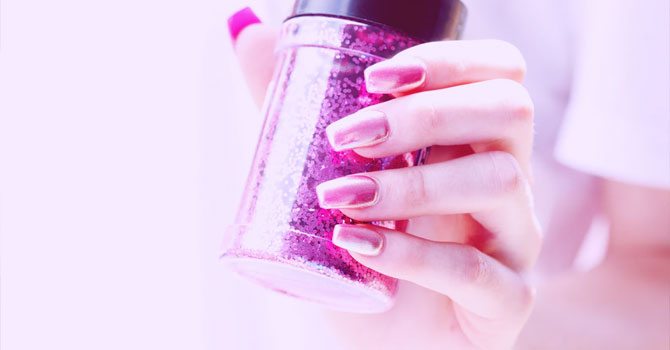

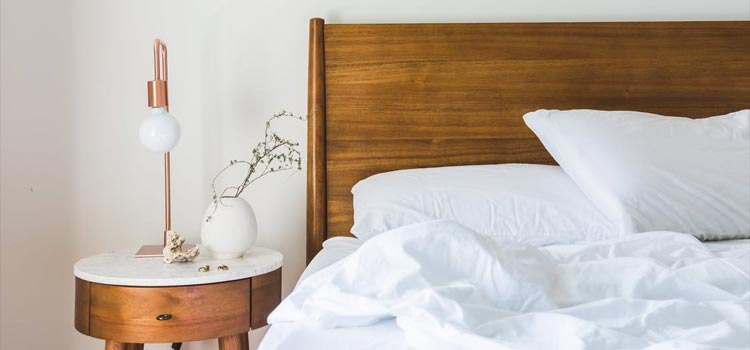



Hi! I’m Asha I’m 19yr old I haven’t finished my class 10 yet but I really wanted to become a runway model, can I become a model😥 please help me🙏
Hi Steve !
Thanks for this information my sister is also a model just starting work at this modelling field and I need this type of article.
Thanks Steve for the tips. You have gone beyond the obvious to self care. This is key and important for one to stay positive and have a healthy mental perception of themselves.